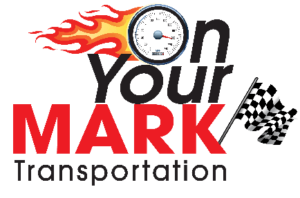It was ironic, nearing the end of a 14-hour work day, and I was invited to a lecture on… Sleep Deprivation.
The Australian Triple Trailer Truck Driver-turned expert was so engaging, and informative, that not only did I stay awake for the whole meeting, I learned a few key points when it comes to driver safety and sleep.
Our Australian mentor managed to surprise us with a number of facts. Here are five key points that you should know about the effect of sleep deprivation on driving.
- A huge percentage of accidents occur just before dawn. Most of us understand that all human beings experience a sort of dead zone just before dawn. Everything just slows down. A driver, part of a test, wired up, knowing he was being observed… was still not be able to combat the effect. No amount of coffee, or awareness, can overcome it. The only solution is a break.
The point is, while it’s important to abide Uncle Sam’s regulations, they are a weak attempt to mirror Mother Nature, and her laws matter more. Mother Nature can’t be beat, but there are some ways to accommodate her. Line schedules can be designed with breaks and meal stops during the dangerous hours. Even a few minutes out of the driver’s seat can be helpful. - The other eye opener (a little sleep pun) was that a similar dead zone happens during the afternoon… less pronounced, but just as real, with accident statistics to prove it. He went on to provide tons of information on how useful different sleep intervals were. Many of the best insurance companies will gladly help you find information regarding the safest schedules for your drivers to keep.
- Sell safety to your customers. Make the prevention of sleep deprivation a key component, not just of your safety program, but as a part of your sales process. Charter companies can sometimes convince their clientele that driving through the night is not the safest way to go. Use all of the information your insurance company can provide to help inform your drivers and sales team of the implications of sleep and safety.
Use this information to structure charters and tours that protect you and your customer. When the customer insists, properly placed relief drivers, and scheduled breaks can help. On long hauls, some operators satisfy Uncle Sam by getting 15 driving hours out of two drivers, without having to pay for a hotel room. Uncle Sam may be OK with this, but not Mother Nature. Trust her. - It’s ok to turn down bad business. Try to resist accepting business that you know is risky. If you can’t change the customer’s mind, turn them down. You may save their lives, and worst case, you give an unreasonable consumer to the competition. Let the competitor bet their company’s future.
- Trustworthy drivers are the key to safety. You can provide time, and comfortable lodging, but it’s tough to MAKE a driver rest. One coach driver has faced jail time because, after an accident, he showed up on a casino’s security camera videotape from the preceding night. His employer provided ample time off, and a room, but he chose to spend the night gambling. Investigators spotted him on the tape, and he was charged. Drivers need to understand that part of their job is taking care of themselves.
Commercial vehicle accidents involving tired drivers are now a hot button with the public. We may be one of the few industries where you can go to jail for working too hard, but that’s exactly what has happened to some drivers. If there’s an accident, safety will trump economics every time. As it should.
My early years in the industry were spent driving buses for a non-profit that was completely unregulated. 20 hour driving stints were common. The fact that we managed to operate millions of miles, without hurting anyone, was not a tribute to skill. No driver is skilled when they’re tired. We survived because of dumb luck, or a protective God (I’m going with the theological alternative).
A number of guys still knocking around the coach industry worked for that same non-profit. Times were different, and we were young and naïve. We now understand the implications and risks involved in driving tired. There is nothing more than prioritizing safety for your drivers and their passengers. Years of experience have taught me that no amount of advanced technology can replace a driver operating with enough sleep.
If your team needs assistance developing routes and schedules that prioritize rested drivers, On Your Mark Transportation would be honored to help you. With extensive knowledge regarding safety regulations and statistics, we are able to help your team create an efficient, cost-effective plan.

